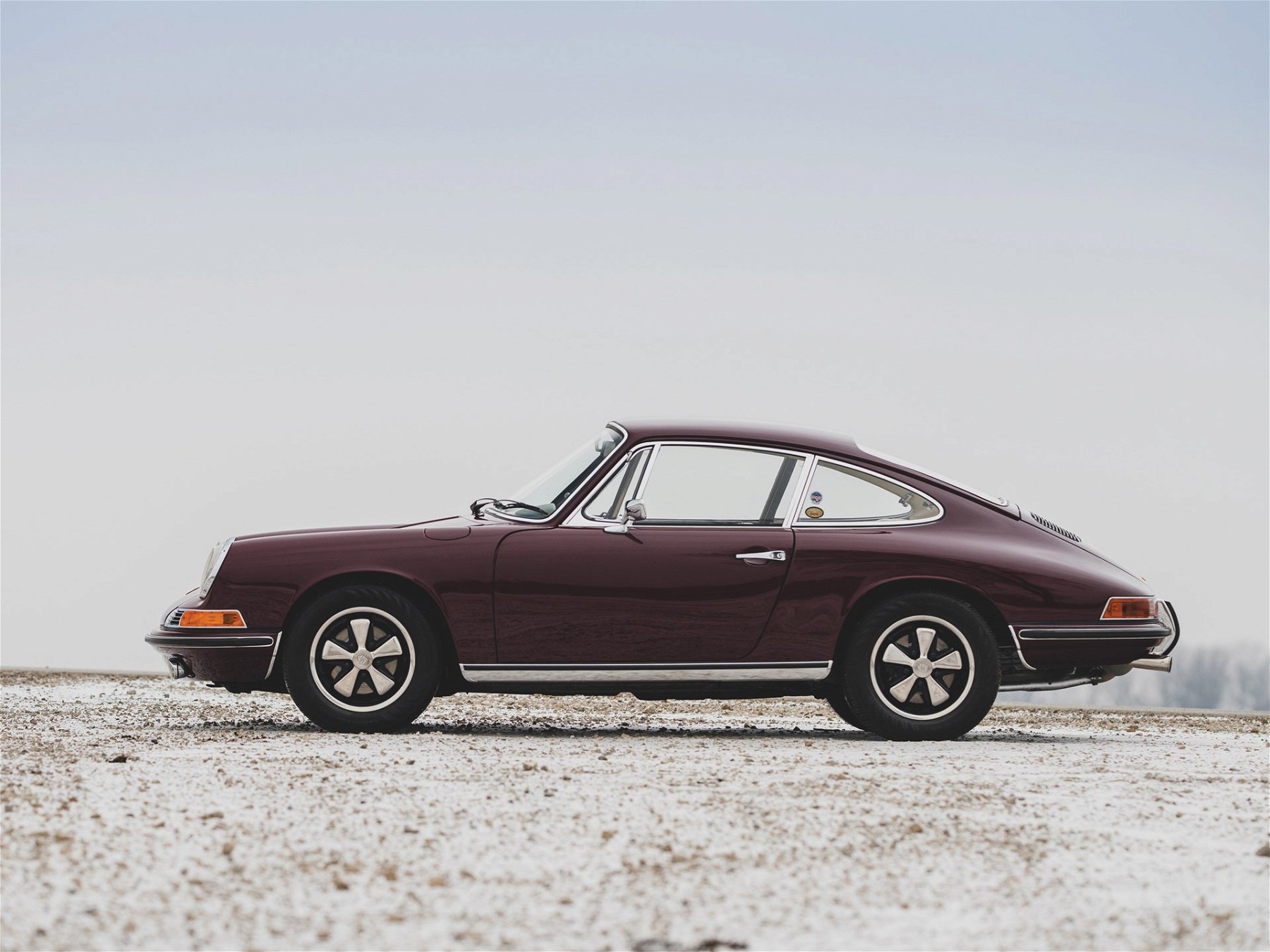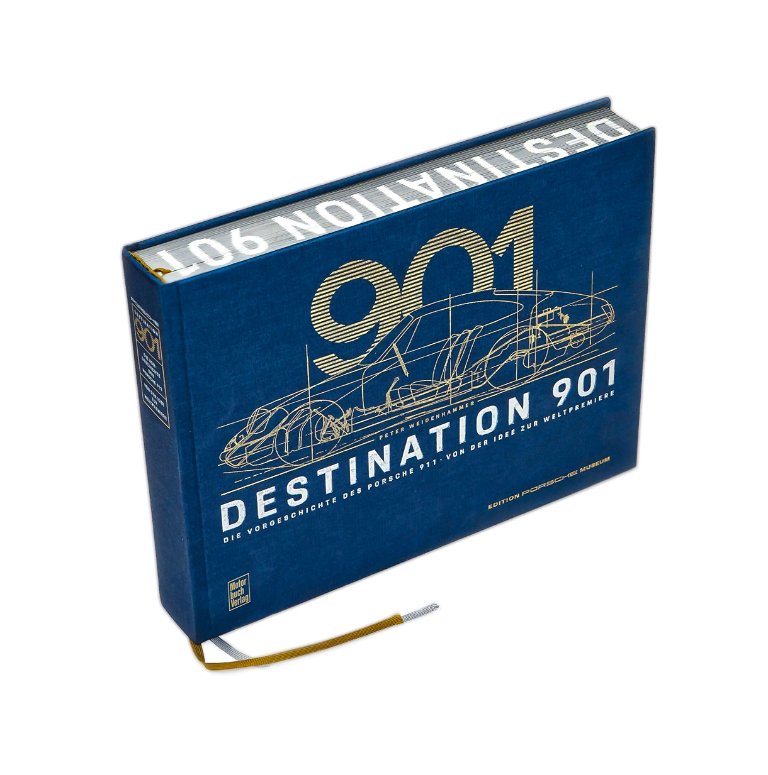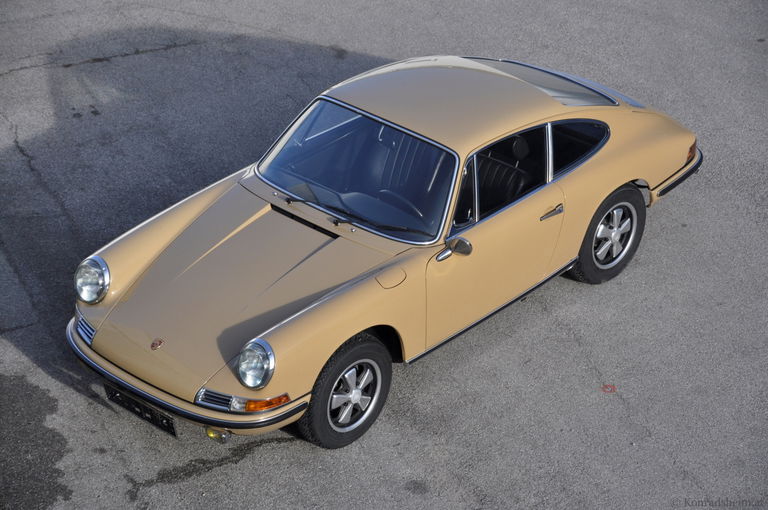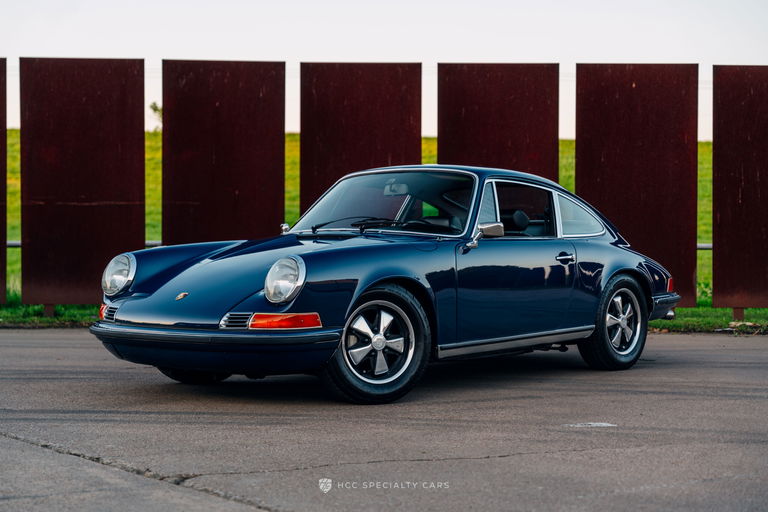The first of many improvements to Porsche’s legendary 911 sports car came in 1966, two years after production had commenced, with the introduction of the 911 S. Easily distinguishable by its stylish Fuchs five-spoked alloy wheels, the S featured a heavily revised engine producing 160 bhp.
Porsche 911 S
Highlights
- Single ownership for 30 years; showing 89,709 kilometers
- European-delivery example, later imported to Canada
- Rare Sportomatic transmission; one of 227 built for 1968
1968 Porsche 911 S ‘Sportomatic’ – RM Sotheby’s
This 911 S was sold new in Europe before making its way to Canada sometime in the 1980s. The current owner purchased the car in 1990 and commissioned a comprehensive restoration that was completed in January. The restoration included a complete stripping of the body, which was expertly refinished in the factory Burgundy color. The contrasting beige interior has been carefully restored as well and features the desirable Pepita fabric front seat inserts seats as well as a modern retro-designed radio. The engine is believed to be a factory replacement, stamped with the original number, and has been completely rebuilt by London Porsche in London, Ontario. It has been upgraded with stainless-steel performance headers. The gearbox also matches the original factory Kardex, a copy of which is included on file. Furthermore, a dossier of restoration receipts along with a spare tire, jack, and tool roll accompany the car.








































